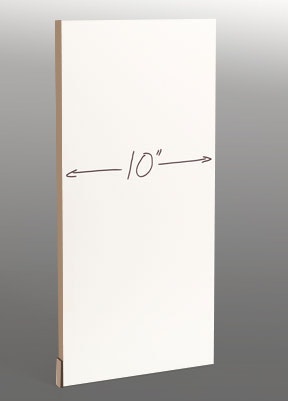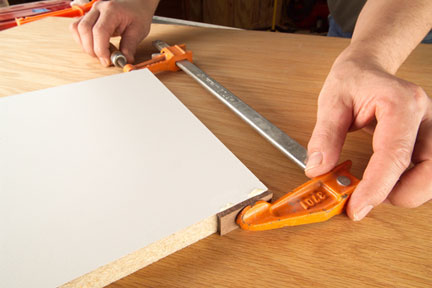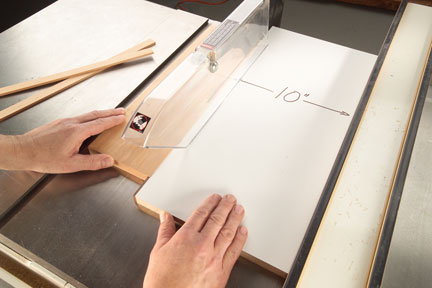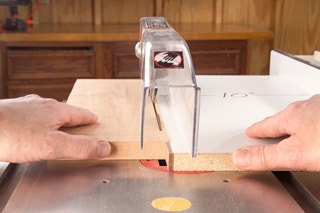Make a Thin-Strip Cutting Jig
Some woodworking projects call for small pieces. You may need to cut chewing gum sized pieces for splines, or 1/4-in. edge banding for plywood. Ripping tiny parts on the table saw can be dicey. I don't like removing the guard from my saw, but keeping the guard in place makes it nearly impossible to bring the fence close enough to the saw blade to rip tiny pieces. A small parts sled is a great answer. It's simple to make and easy to use. This sled makes it very easy to fine-tune the fence position and cut the perfect size part. This is especially critical if you're cutting splines to fit into an existing groove. I use the sled whenever I'm cutting pieces 1-1/4-in. or less wide.

The sled is simply a piece of man-made material, melamine in this case, that you've ripped to a perfect 10-in. width. After ripping the sled to width, glue and clamp a hook on it. Don't use any brads to hold the hook. Use a small piece of 1/4-in. thick material, like hardboard, for the hook. Record the sled's width on the face.

Use the sled by setting the rip fence to 10-in. plus the dimension of the piece you need. So, if you want 1/4-in. edge banding you’ll set the fence to 10-1/4-in. That's why I chose 10-in. for the width of the sled. 10 is an easy number to work with when it comes to setting the fence.
Start the cut by engaging the sled's hook against the end of the material you’re ripping. It takes just a little bit of sideways pressure from your left hand to keep the material against the sled. Push the sled and board through the blade together, just as though you were cutting one wide piece.

If you cut extremely small pieces, like splines, you may find that you cut into the hook every once in a while. That's why it's important to use glue only, no fasteners, to hold the hook in place. If you cut in to the hook a lot, you can always set the rip fence to 10-in., cut the hook off, and glue on a new one.
Keep the inspiration coming!
Subscribe to our newsletter for more woodworking tips and tricks



